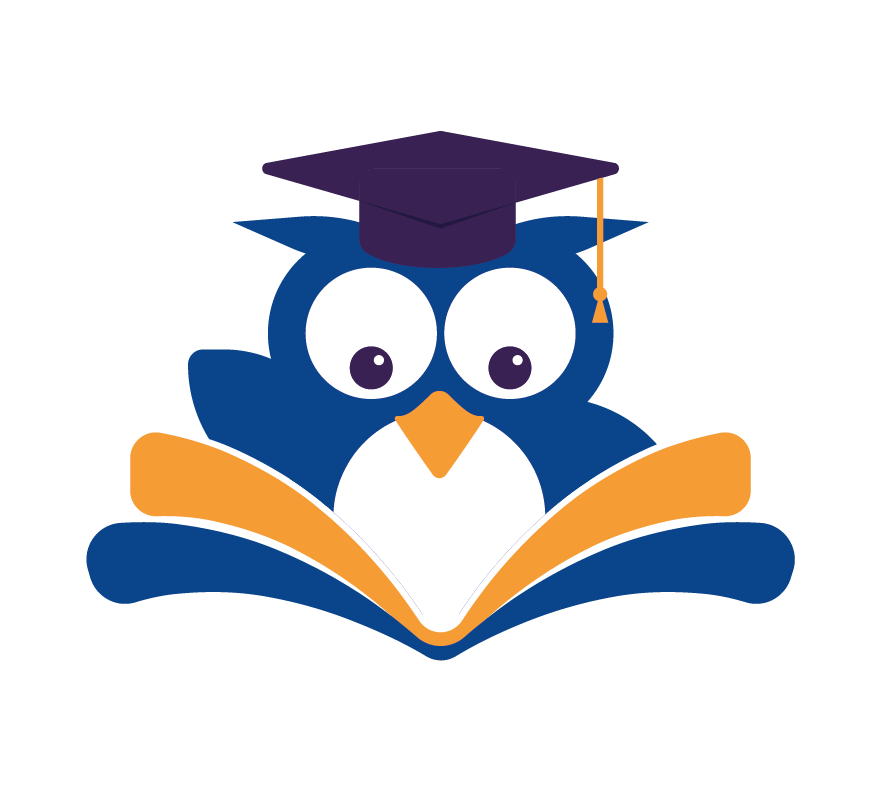Zig Ziglar once said, “If you are not willing to learn, no one can help you. If you are determined to learn, no one can stop you.” This powerful quote shows how crucial determination is on your educational path.
Starting a learning journey can be both thrilling and scary. We’re here to help you navigate this path. We aim to help you unlock your potential and reach your goals.
We want your educational journey to be fun and productive. We’ll share practical study tips and motivation. Our goal is to turn studying from a chore into an exciting adventure.
Key Takeaways
- Discover the importance of determination on your educational path.
- Learn how to unlock your potential and achieve your goals.
- Explore practical study methods to enhance your learning experience.
- Stay motivated and engaged throughout your learning journey.
- Transform studying into an enjoyable and effective experience.
The Transformative Power of Continuous Learning
Continuous learning is key in today’s digital world. It helps us grow personally and professionally. In our fast-paced lives, learning new things is essential to stay current.
How Your Brain Changes When You Learn
Learning changes your brain a lot. Knowledge acquisition makes your brain flexible and adaptable. This flexibility is crucial for learning new skills and information.
Why Lifelong Learning Is Essential in the Digital Age
In today’s world, skill development is more than just work. It’s about feeling fulfilled. Continuous learning keeps you updated with new tech and methods. It helps you face modern challenges with confidence.
Discover Your Unique Learning Style
Everyone learns in their own special way. Finding out how you learn best can change everything. It makes learning fun and helps you do better.
The Four Major Learning Styles Explained
There are four main learning styles: Visual, Auditory, Reading/Writing, and Kinesthetic. Knowing these styles helps you learn better.
Visual, Auditory, Reading/Writing, and Kinesthetic Approaches
- Visual learners get information best from pictures, diagrams, and videos.
- Auditory learners learn by listening to talks, discussions, or audio.
- Reading/Writing learners do well with written stuff, like notes and texts.
- Kinesthetic learners learn by doing things, like hands-on activities.
Experts say “Embracing Active Recall” is key to learning well. This fits with finding and using your learning style.
How to Identify Your Primary Learning Style
Finding your main learning style takes some thinking and trying things out. You can use tools and methods to see which style fits you.
Self-Assessment Tools and Techniques
| Assessment Method | Description |
|---|---|
| Online Quizzes | Online quizzes can tell you your learning style based on your choices and actions. |
| Learning Style Inventories | These detailed inventories ask you to rate your likes for different learning activities. |
| Reflective Journaling | Writing down your learning experiences and thinking about what works for you. |
Knowing and using your unique learning style boosts your learning progression and personal growth.
Crafting Meaningful Educational Goals
Setting meaningful educational goals is key to a successful learning path. Clear objectives help you stay focused and make progress towards your dreams.
Distinguishing Between Short-term and Long-term Objectives
It’s important to know the difference between short-term and long-term goals. Short-term goals are quick targets that boost your momentum. Long-term goals are bigger dreams that need ongoing effort.
The SMART Framework for Learning Goals
To make your goals effective, use the SMART framework. This means your goals should be:
Specific, Measurable, Achievable, Relevant, Time-bound
| SMART Criteria | Description | Example |
|---|---|---|
| Specific | Clearly define what you want to achieve | Learn Spanish |
| Measurable | Quantify your goal so progress can be tracked | Reach conversational fluency |
| Achievable | Ensure the goal is realistic based on your resources | Study 3 times a week |
| Relevant | Align your goal with your broader educational exploration | Improve career opportunities |
| Time-bound | Set a specific deadline for achieving your goal | Become proficient in 6 months |
By using the SMART framework, you can map out a learning journey that’s both inspiring and reachable.
Mapping Your Personal Learning Journey
Your educational path is unique, and having a clear plan is key. As you learn more, it’s important to see your goals and milestones clearly.
Creating a Visual Roadmap of Your Educational Path
A visual roadmap keeps you focused on your goals. Start by listing your short-term and long-term goals. Then, break down big goals into smaller tasks and schedule them on a timeline.
Balancing Specialization and General Knowledge
It’s important to balance specializing in one area with broad knowledge. Being an expert in a field is valuable. But, knowing a lot about different subjects helps you connect ideas.
| Skill Development | Specialization | General Knowledge |
|---|---|---|
| Programming | Expertise in Python | Understanding of software development principles |
| Marketing | Knowledge of SEO strategies | Familiarity with market research methods |
Identifying Key Milestones and Checkpoints
To stay on track, mark important milestones and checkpoints. Checking your progress often keeps you motivated. It also lets you adjust your plan if needed.
Master Effective Study Techniques
To reach your full learning potential, mastering effective study techniques is key. Using the right strategies can greatly improve how well you learn and remember. This makes your learning journey more successful.
Active Learning Strategies That Enhance Retention
Active learning is a powerful way to engage with what you’re studying. It’s more than just reading or listening. Two great strategies are the Feynman Technique and deliberate practice.
The Feynman Technique for Deep Understanding
The Feynman Technique means teaching a concept as if explaining it for the first time. It helps you see where you need more practice. It also makes your understanding stronger.
Deliberate Practice Methods
Deliberate practice focuses on setting and achieving specific goals. It pushes you to improve beyond your comfort zone. This method helps you grow and get better.
Implementing Spaced Repetition Systems
Spaced repetition reviews material at longer intervals to help you remember it better. It’s great for learning new languages or key concepts. This method can save you time and effort.
| Study Technique | Description | Benefits |
|---|---|---|
| Feynman Technique | Teach a concept to someone else | Deep understanding, identifies knowledge gaps |
| Deliberate Practice | Focused practice with specific goals | Improved skills, builds confidence |
| Spaced Repetition | Review material at increasing intervals | Long-term retention, reduces study time |
Note-Taking Methods for Different Subjects
Good note-taking is key for learning and remembering. Different subjects need different note-taking methods.
Cornell, Mind Mapping, and Outline Methods
The Cornell method divides your paper into two columns for notes and summaries. Mind mapping creates a visual note map. Outlining organizes your notes in a structured way.
“The way we take notes is crucial, as it determines how well we retain information and how easily we can recall it later.”
By using these study techniques, you can improve your learning and retention. This sets you up for success on your learning path.
Harness Technology to Accelerate Your Learning
Today, you can boost your learning with digital tools. Technology helps you learn better and faster. This way, you can reach your personal growth goals.
Digital Tools for Knowledge Organization
Keeping your knowledge organized is key to learning well. Digital tools help you track your progress and stay focused on your studies.
Note-Taking Apps and Knowledge Management Systems
Apps like Evernote and OneNote help you organize your thoughts. Systems like Notion let you store all your learning in one place.

| Tool | Description | Benefits |
|---|---|---|
| Evernote | Note-taking app | Organizes thoughts, syncs across devices |
| Notion | Knowledge management system | Centralized hub for learning materials, customizable |
| OneNote | Note-taking app | Integrates with Microsoft Office, organizes notes |
Selecting the Right Online Learning Platforms
Choosing the right online learning platform can be tough. Think about what courses you need and what features matter to you.
Comparing MOOCs, Microlearning, and Interactive Courses
MOOCs offer many courses, while microlearning gives you short, focused lessons. Interactive courses let you learn by doing.
- MOOCs: Comprehensive courses on various subjects.
- Microlearning: Bite-sized learning for specific skills.
- Interactive Courses: Hands-on learning experiences.
Using AI Tools to Enhance Your Studies
AI tools can make your learning more personal. They help you stay on track and reach your goals.
By using these technologies, you can make learning more fun and efficient. This drives your personal growth.
Cultivate a Growth Mindset for Continuous Improvement
Embracing a growth mindset is key to reaching your full potential on your learning journey. It means you believe your abilities can grow with effort and hard work. This mindset is vital for skill development as it lets you face challenges head-on and keep going even when it’s tough.
Reframing Challenges as Opportunities
When you face a tough task, see it as a chance to grow, not a threat. Ask yourself, “What can I learn from this?” or “How can this challenge help me get better?” Changing how you see things can turn failures into chances for success.
Developing Resilience Through Productive Failure
Failure is a normal part of learning. Don’t let setbacks hold you back. Instead, use them to learn and grow. Figure out what went wrong and how to do better next time. This builds your resilience and strengthens your growth mindset.
The Power of “Yet” in Your Learning Vocabulary
Using “yet” in your speech can be very powerful. When you say “I’m not good at this yet,” you’re saying you’re on the way to getting better. It changes a fixed mindset into a growth mindset, showing that your abilities can grow over time.
Establish Powerful Learning Habits
Building strong learning habits is key to success in education. To reach your goals, it’s important to create habits that help you keep moving forward.
Designing Your Ideal Study Schedule
Starting with a good study schedule is essential. We suggest using time blocking and interleaving to boost your productivity.
Time Blocking and Interleaving Techniques
Time blocking means setting aside specific times for studying. Interleaving is switching between different subjects to improve memory. Together, they make a study plan that works well.
Creating an Environment That Promotes Focus
Your study area greatly affects your focus. Make a dedicated space that’s free from distractions and has everything you need.
Building Consistency Through Habit Stacking
Habit stacking means adding new habits to your daily routine. This way, learning becomes a natural part of your day.
| Habit | Frequency | Benefits |
|---|---|---|
| Daily Review | Daily | Improved Retention |
| Weekly Planning | Weekly | Enhanced Productivity |
| Monthly Reflection | Monthly | Better Goal Alignment |
Navigate Common Obstacles in Your Learning Journey
The path to knowledge is rarely smooth. But knowing common obstacles can help you navigate better. You’ll likely face procrastination, information overload, and learning plateaus.
Defeating Procrastination With Proven Strategies
Procrastination is a big hurdle. To beat it, try the Pomodoro Technique:
- Work in focused 25-minute increments.
- Take a 5-minute break.
- Repeat for a total of 4-6 “Pomodoros” per session.
The Pomodoro Technique and Other Time Management Methods
Other time management methods are also effective:
- The Eisenhower Matrix for prioritizing tasks.
- Time blocking to schedule your day.
Coping With Information Overload
With so much information out there, it’s easy to feel overwhelmed. To manage this:
“The key is not to prioritize what’s on your schedule, but to schedule your priorities.” – Stephen Covey
Stick to credible sources. Use digital note-taking apps to organize info.

Breaking Through Learning Plateaus
Learning plateaus can be tough. To get past them, try:
- Progressive challenge: Gradually increase the difficulty of your study material.
- Skill development: Focus on building related skills to enhance your learning.
Progressive Challenge and Skill Development
For example, if learning a new language, try:
- Engaging in conversations with native speakers.
- Watching TV shows or movies in the target language.
By using these strategies, you can keep moving forward on your learning journey.
Track Progress and Celebrate Achievements
Your educational journey is a path of continuous growth. Tracking your progress helps you stay on course. As you explore new subjects and develop new skills, it’s essential to monitor how far you’ve come.
Implementing Personal Knowledge Metrics
To effectively track your progress, you need to establish personal knowledge metrics. This could involve setting specific learning goals and measuring your progress against them. For instance, if you’re learning a new language, your metrics might include the number of vocabulary words learned or the ability to hold a 10-minute conversation.
The Importance of Reflection in Learning
Reflection is a critical component of the learning process. It allows you to assess what’s working and what areas need improvement. Regular reflection can significantly enhance your educational exploration.
Journaling and Self-Assessment Practices
One effective way to reflect on your learning is through journaling. By regularly writing down your thoughts, insights, and challenges, you can gain a deeper understanding of your learning process. Self-assessment practices, such as quizzes or practical exercises, can also help you evaluate your progress.
Meaningful Ways to Celebrate Learning Milestones
Celebrating your achievements is crucial for staying motivated. Whether it’s completing a challenging course, mastering a new skill, or reaching a specific milestone, acknowledging your successes can boost your confidence and reinforce your commitment to your educational journey.
| Milestone | Celebration Idea |
|---|---|
| Completing a challenging course | Treating yourself to a favorite meal or activity |
| Mastering a new skill | Sharing your achievement with friends and family |
| Reaching a specific learning milestone | Setting a new, more challenging goal |
Connect With Others on Your Learning Journey
As you explore your educational path, you’ll find that learning with others makes it better. It’s not just about you; it’s more fun and effective when you share it with friends.
Finding and Joining Learning Communities
Connecting with others is easy by joining a learning community. Look for online forums, study groups, or mastermind circles that match your interests.
Online Forums, Study Groups, and Mastermind Circles
Reddit’s r/learnprogramming and Stack Exchange are great for learning from others. Study groups offer a place to work on tough topics together. Mastermind circles push you to grow by supporting and challenging each other.
The Educational Power of Teaching Others
Teaching what you know helps you understand it better. Explaining a concept to someone else makes you think clearer and solidify your knowledge.
Collaborative Learning Projects and Peer Feedback
Working on projects with others lets you apply what you’ve learned. Getting feedback from peers helps you see what you can improve on.
Conclusion: Embracing Lifelong Learning as a Way of Life
We’ve looked into how learning never stops, found our own learning styles, and set goals. We’ve planned our learning path, learned how to study well, and used tech to learn faster.
Learning for life is key to growing and improving. By seeing learning as ongoing, we can keep getting better and reach our highest potential. Your learning journey is a path of growth, with each step opening new doors and experiences.
We urge you to keep going on your learning path, celebrating your wins and overcoming hurdles. With the right attitude and methods, you can reach your goals. So, keep exploring, keep learning, and watch yourself grow!

